
Greetings, Nerds, Scholars and Musical Instrument Obsessives!
This is the first in a series of photo essays on AMIS 2024 (May 15-18) – the annual meeting of the American Musical Instrument Society.
Please note that my blog is not affiliated with AMIS (or even necessarily condoned by); these are my own very personal observations and experiences at the event, with focus on my areas of main interest, plucked strings, and (as you’ve come to expect) finishing up with harp guitars.
This is the first conference I’ve been able to attend since 2019’s event in Greenville SC. That’s five years without my peeps! So, I’d like to begin my trip report with just that: the people. As always, it was such a pleasure to meet up with old friends (I hope you know who you are), while meeting so many new ones. The connections – and many lasting friendships – we make at these events is the main reason we attend these things. Also, going with a group like this lets you into an inner circle that you otherwise wouldn’t experience. For example:
Though I didn’t get into the storage area this trip, I got a lot of inside gossip and also a secret HVAC tour when I asked about their environmental control. As my own new museum room is now displayed “open air” like the MIM, I was curious how in the h*** they kept it clean?! The short answer (from Matt Zeller, Curator for Europe, and our host for the week) was that a crew goes around and hand dusts their 7500+ instruments…every week! Where too delicate they use little air spritzers to blow dust off into the vacuum collector. Well, there goes my retirement.
The infrastructure I got a peak at was insane (remember that the building alone originally cost 200 million). Where my barn has a steam humidifier consisting of a canister about the size of a football, theirs (in behind-the-scenes warehouse-sized sections) consisted of four giant steam generating rooms. These hold the entire building within 45-55%. In another area were pipes and bulkheads fit for a nuclear sub that handled their air, kept at 69-72 F. (I diplomatically kept my camera off but was allowed to note the brand of their air filter pads.)
All of this is controlled by software in the head engineer’s office. Super high tech (would’ve loved to have seen that). If a few too many people were to end up in a given gallery, CO2 levels are monitored and oxygen is pumped in for real-time optimum mix. Yeah, they take “guest relations” to a whole ‘nother level!
OK, time for some photos:

Matthew Zeller, who I met in 2016 in South Dakota, when he worked at the NMM, served as our host; I was extremely impressed with his laid back, zero-stress handling of the entire proceedings (at least outwardly!). Thanks, Matt! He’s a keeper.
The main purpose of these meetings, of course, is to present papers of new research. A modern “paper” is typically a PowerPoint presentation. Some then read theirs word-for-word, some engage the audience to a greater extent, and some go wildly off book to much delight and/or consternation (me in 2016, Bill Shull this year). I actually sat through the majority of them this year, as I’d seen the museum’s growing exhibits on two extended visits (otherwise, you wouldn’t have seen me outside of them the entire time).
Here’s just a sampling where I snapped quick photos of topics in my areas of interest. The full schedule can be viewed here. In order of appearance:
Not one, but two presentations were given on the Vietnamese Dan bau. For the layperson, we describe this as a single string “played with a whammy bar.” Here’s mine, the typical modern import. First, Hippocrates Cheng (Indiana) explained the bamboo monochord’s evolution into an electric instrument (sustain like an electric lap steel guitar!). Click on his image to hear a brief demonstration.

Next, Lisa Beebe (Sacramento, CA) spoke of Canada’s fretted dan bau (basically, Eddie Van Halen tap-playing on a single string). New and essential.

Continuing with Vietnam, Tùng Nguyễn (Oregon) unearthed the origins of the long-necked, moon-shaped lute of that country.
I should mention that all of these Gribbon Scholar “students” above (and most others) are professional musicians (on various instruments) as well as researchers.
A goodly part of the first afternoon was hearing about the insane new Guideport technology upgrade Sennheiser has created in collaboration with the MIM. Once installed, sounds in your headset will appear to literally come from a specific instrument (accuracy within 30 cm) – even if you merely turn your head toward it. Fun, but – staff creating all this content – be careful what you wish for?!

Maya Brown-Boateng (Pittsburgh, currently doing a fellowship at the MET) gave a paper in my wheelhouse – early banjos (5-strings, specifically) and the reclaiming of the instrument by Black musicians. We share many of the same colleagues and found that our research (mine with Black harp guitarists) shares many sources and similar observations of utterly flabbergasting cognitive dissonance of those decades.
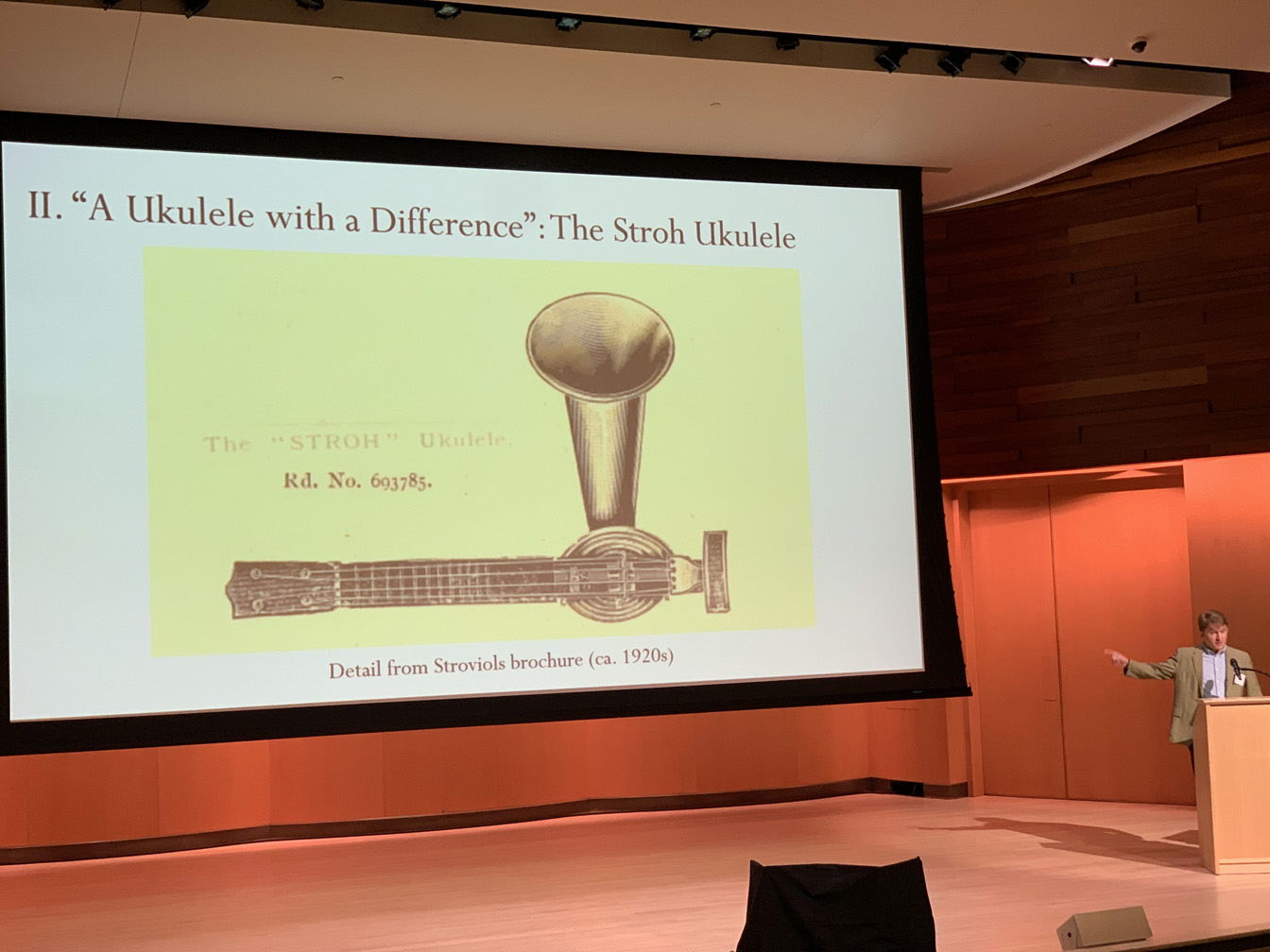
The Stroh Uke? Count me in! I still don’t have one. Super rare and pricey. Fun to see and learn more from Chet Stussy (Santa Barbara CA).

I always assumed the Stroh inventions (that’s him above left) were to amplify instruments for the vaudeville stage and the like. Chet showed (and the other image proves) that a key aspect of their invention was specifically for the needs of the early recording studio technology. And now I just want one even more!

AMIS is always mind expanding. One needn’t be a PhD student or Dr to present or appreciate the events at (just look at me, Mr. College Dropout), though it helps. Indeed, I have to admit that Chris Miller’s (Northumbria U) paper went completely over my head. As in, “Hulk brain hurt.” It was titled ““Organologists Are Not Morticians, a Saz Cannot Cry, and Organology Is Object-Oriented: A Sympathetic Critique of the Ethnomusicological Turn to Actor-Network Theory and What New Materialism(s) Could Better Reveal of Musical Instruments” So, strap in! His explanatory chart above should be clear enough.

A very cool project was jointly presented by Núria Bonet (Plymouth) and Albert Fontelles-Ramonet (Barcelona). They had recently located the fabled baritona, a near-mythical double-reed Catalan instrument used in Cobla ensembles. They played clips of some of these orchestras, and the Catalan music and sound was incredible. I’m now off to search for recordings of this (to me) obscure music.

There’s one at every AMIS. This year’s talked-about fascinating and fun presentation was Patrick Connor Dittamo’s (Chicago) serious investigation into the medieval schandflote, or “shame flute.” As stated, “This punitive device was ostensibly used in the late Middle Ages to publicly shame inept musicians…” I love it! Certainly, we could use something similar today for really bad guitarists, for example?

Well, despite the numerous examples of the contraption in collections (some of the many neck-collar, finger-locking devices are shown above), it turned out that it was all a myth; the “surviving” ancient devices are actually all later imagined creations based on the old legends. And just when I was about to start searching on eBay…

In the afternoon on this third day, we now switched to a first-time-at-AMIS session of posters. Unlike “papers,” “posters” are exactly what they sound like: large poster boards with one’s presentation laid out on them in graphic fashion. There were six of us, spread out in the corners of one large conference room, vying for attention like carnival barkers. Think “Science Fair” but for music nerds. All that was missing was a paper mâché volcano, which I am threatening to ignite next time if Robert Warren Apple plans to demonstrate his keyed trumpets again. (insert winky emoticon.) Anyway, none of us had ever made a poster, so the results varied quite a bit!
Robert’s (above) omitted nothing. And he still had plenty to say, and play!

Lidia Chang’s was quite attractive, but I’d say she cheated as her one-of-a-kind “female figure with built-in clavichord” featured an obvious and intentional “nipple slip.” How were we supposed to compete with that?!

Two others (by Stewart Carter & Zhiyu Zhang and Stella Smith), and I missed the 6th by Fangying Wang.

Mine was a timely topic, and friends and some curious onlookers found themselves caught up in my wild adventure.

I earned an unofficial gold star for “extra credit” with my second page reveal highlighting some before/during/after images of the construction and set up.

On our final day, we took a bus to Arizona State University, a lovely campus in nearby Tempe…

…lovely unless you have to live here. Only one hundred degrees in May, what am I complaining about?!

Here, a couple more papers were given in the Organ Hall, including a fascinating trek to Oaxoca to examine Mexico’s oldest surviving piano. Co-presented by Fanny Magaña and Jimena Palacios Uribe.

Next, our host, Professor Kimberly Marshall gave impressive demonstrations on their two pipe organs, a 1991 16’ Fritts (much like Bach would have played, nice and loud)…

…and a restored 1742 Traeri.

One of the first new people I had met at Wednesday evening’s check-in reception was Jake Goldwasser (Tennessee), who told me he was there to present on the “First American Saxophone.” Not being a woodwinds guy, I wasn’t familiar with the topic, but he promised it would be revealing.
Indeed, at lunch just before his presentation, I didn’t quite catch what he was talking about and why he had a saxophone case with him.

It was because the fabled first American (Conn) saxophone turned out to be his own! Yeah, he’s now making the sax circuit with this news. Having been given this saxophone as a youngster, he became a scholar and curator (fate?). Whilst recently restoring his “No. 1”- marked instrument, he discovered additional smoking gun clues that pointed to it being – not even #1, but “number zero” – the original Buescher-built prototype. Pretty exciting stuff. I gotta go start taking apart my instruments…

Sebastian Kirsch (Vienna; he’s the incoming musical instrument curator of the famed Kunsthistorisches Museum) told of his meticulous research into printed paper fragments used in the construction and repair of old lutes and stringed instruments – and what they can reveal. Impossible? He had just done a new identification that day with one of the MIM’s instruments. He took a photo through the soundhole, deciphered the text, typed it into Google and found the book that the phrase had come from, then an image of that book’s page, which matched his image from inside the instrument! Crazy, and clearly a guy who should find a normal hobby.

Next was Daniel Fishkin (Virginia), who clearly will never have a normal hobby. He spoke of his discovery of an obscure “friction block” – two actually. One, the “arbrasson,” was created in 1992 by Jose Le Piez, a sculptor in France, whose YouTube video caught Daniel’s eye and ear. The other (originally unbeknownst to Le Piez) is the obscure livika of New Ireland (Papua New Guinea), a 3-tongue carved log, rubbed “to produce a piercing, loud cry.”

After meeting Le Piez and doing an album and film together, Daniel now builds his own arbrassons and can teach you how to make one, too!

Emily Dolan (Brown Univ.) discussed the pochette and other obsolete instruments and examples of their resurrection (often on the operatic stage) through a “performance of their performance.” So, there’s hope for my oddball collection yet!

Devanney Haruta (Brown Univ.) created a most unusual and thoughtful project called “Piano (de)compostion.” Rather than watching one of the university’s pianos go off to the dump, she gained permission to have it transported to the woods outside for a public interactive experience contemplating the “life” and “death” of a musical instrument. Even now, the inexorable decay continues…as does music. Food for thought, and NBC’s Lester Holt is doing a segment on it any day now!
That was the last one; these were about half of the papers given (I hope others will highlight theirs also).
On Saturday evening, we enjoyed a great buffet banquet in the lobby with an excellent Samba band brought in for the occasion. A few of us tried our hand on the dance floor, with the woman doing their best to compete with the MET’s Ken Moore’s “magic hips.” Oh, the hidden talents of this AMIS crowd!
And a great chance to catch up with so many other friends not pictured or mentioned above: Jayson, Matthew (Hill), Michael, Susan, Connie, Laury, Edmond, Jayme, Aurelia, John, Janet, Jim, Carolyn and many others.
In Part 2, I’ll continue with some of the new instruments and displays I spotted this trip (along with some old favorites).
This year was a little bittersweet as I learned (was reminded, actually) that it was my last year serving on the Board of Governors. I can only hope that my service wasn’t a complete disappointment to the Society. Our president Janet Page also stepped down on the last evening and we welcomed incoming prez Jim Kopp (bassoonist, scholar, gentleman; I worked with him on a couple committees…he’ll be great!).
Though no longer on the board, I’ll not stop singing the praises of the society and beating the bushes trying to get my guitar and other plucked string friends to join. Or just come to one of the meetings. Yes, these events can get pricey with travel, hotel and reg fees – but always reap unexpected rewards, which (in addition to all the above) I’ll be revealing throughout this series. The MIM alone was reason enough for anyone who hasn’t yet experienced this museum to attend. Don’t miss the next one! (And definitely start thinking about joining us at the fully renovated National Music Museum in SD, scheduled for AMIS 2026.)

…and more perks. The MIM kindly gifted us three of the books I scored above. I then bought two more at the store with a 10% discount, supporting the museum, while avoiding Amazon, which would have destroyed the brand new Lloyd Loar book had I gone that route. Lesson: AMIS = good, Amazon = bad.
Next: Some of my instrument favorites, while we stroll through the Galleries!



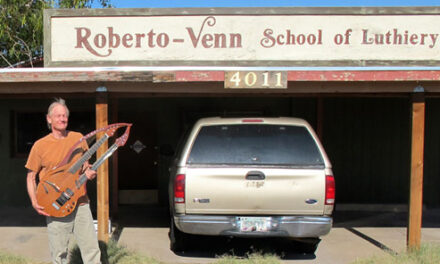
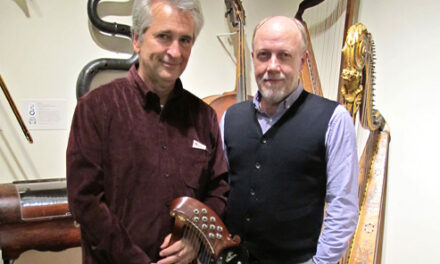
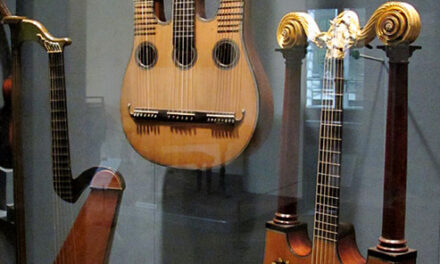
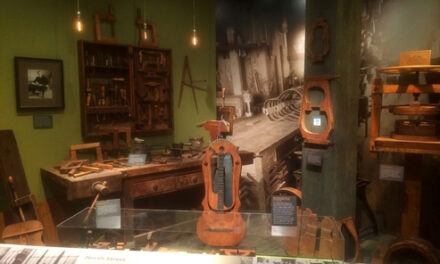
Awesome report, Greggster! I’m frankly glad to be able to experience it surreptitiously, through your posts, rather than being there in person. I think maybe I’m getting too old to do that stuff in person anymore, especially the travel.
So…thanks!!
Fred
don’t take apart too many, Gregg!! 🙂
it was absolutely wonderful meeting you, and being a part of the grand recap! excited to continue further in the field, and seeing more of these great events!